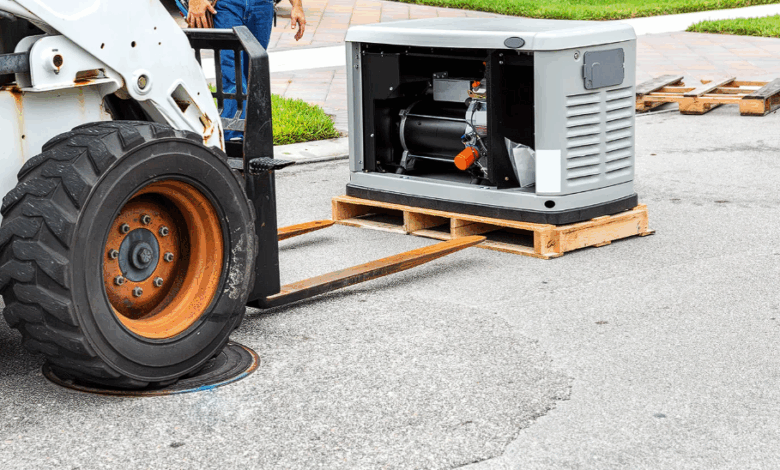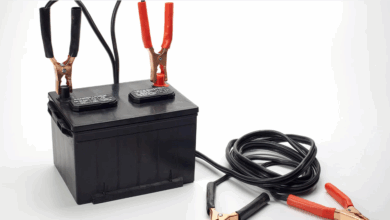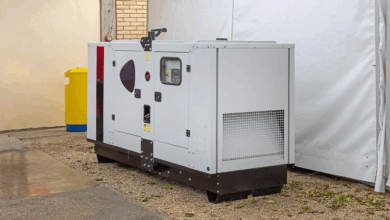How Far Should a Generator Be From Your House?

Installing a generator at home provides peace of mind during power outages, but improper placement can pose serious safety risks—especially due to carbon monoxide (CO) exposure and fire hazards. According to the Centers for Disease Control and Prevention (CDC), positioning a generator too close to your home could lead to illness or even death. That’s why understanding safe generator placement is essential.
Recommended Distance: How Far Should a Generator Be From Your Home?
As a general safety rule, portable generators should be placed at least 20 feet away from your home—especially from windows, doors, and vents. This reduces the risk of CO infiltration and minimizes noise.
How Far Should a Standby (Whole House) Generator Be?
When installing a standby generator, follow these basic guidelines:
- Minimum distance from the house: 5–6 feet
- Minimum distance from windows or openings: 8–10 feet
- Preferably installed against a blank wall (no windows, vents, or doors)
Always consult the manufacturer’s installation manual, which provides specific clearance and grounding recommendations. It’s also important to check local building and zoning codes to ensure compliance with air and noise regulations.
Important: Never place any generator indoors, including garages or basements. Always install outdoors with proper ventilation.
Key Factors to Consider Before Installing a Standby Generator
1. Manufacturer’s Guidelines
Follow the manufacturer’s safety instructions and clearance requirements exactly.
2. Size of the Generator
Larger generators tend to produce more noise and emissions, which may require placing them farther from your home. For instance:
- Generac 45kW Protector (high-powered unit): Installed 12 ft. away
- Generac EcoGen 15kW (lower output): Installed about 5–6 ft. away
3. Noise, Air, and Fire Safety Regulations
- Noise laws vary by state and locality. If your generator exceeds local decibel limits, consider soundproofing it or building an enclosure.
- Ensure your generator meets EPA or CARB emissions standards.
- Adhere to NFPA (National Fire Protection Association) codes, which may require permits and inspections.
4. Local Building Codes
Check with local authorities or HOA (Homeowners’ Association) to confirm setbacks, placement requirements, and noise ordinances.
5. Exhaust Direction
Ensure the exhaust faces away from the home, especially from windows and doors. Maintain at least 10 feet of distance from any air entry points.
How Far Should a Portable Generator Be From Your Home?
- Minimum distance: 20 feet
- If the exhaust faces away from the house and the unit is enclosed, 10–15 feet may be acceptable.
Key Considerations for Portable Generator Placement
1. Exhaust Position
Point the exhaust away from living areas. If this isn’t possible, maintain a minimum of 20 feet from the nearest window or door.
2. Enclosure or Cover
An enclosed or insulated generator can be placed closer due to reduced noise and fumes. However, open-frame models should remain at a safe distance.
3. Noise and Air Quality Compliance
Check local requirements for noise levels and emissions. Use a silencer or muffler if your unit is too loud, and ensure your generator complies with EPA or CARB standards.
4. Power Cord Length
Keep extension cords under 20 meters (65 feet) to avoid voltage drops or surges, which can damage sensitive appliances.
5. Level Ground Placement
Generators must sit on a flat, stable surface to allow for proper oil circulation and to prevent engine damage.
Tip: Many engines rely on internal oil splash systems, which work best on level surfaces.
Generator Placement for RVs and Campers
When camping or RVing:
- Minimum distance: 18–20 feet from your camper’s windows or vents
- If windows are airtight and closed: 8–10 feet may suffice
- Always install a carbon monoxide detector inside your camper or RV
- Position the exhaust away from the camper
How Far Should a Generator Be From a Window?
Avoid placing a generator near any openable window or door. Maintain a minimum 20-foot distance, especially if the window is not sealed. Always angle the exhaust away from your home, and consider using a CO detector indoors for added safety.
How Far Should a Generac Generator Be From the House?
Generac generators are designed for efficient combustion and quiet operation. Their units typically allow closer placement when installed correctly:
- If no windows nearby: 2–3 feet may be acceptable
- If near a window: Maintain at least 5 feet, and ensure the window remains closed during operation
Always verify distance requirements in the Generac installation manual or consult a certified installer.
Best Practices for Generator Exhaust Positioning
For Standalone Homes:
- Direct exhaust away from the house, ideally with the wind
- A 30–45° angle can help reduce turbulence and noise
For Buildings or Apartments:
- Install horizontal or vertical exhaust extensions
- Vent exhaust gases above or away from the structure
- Avoid directing fumes toward neighboring units or enclosed courtyards
Need help with setup? Refer to your generator’s user manual or consult an expert installer.
Safe Placement Equals Safe Operation
Before installing any generator—whether portable or standby—ensure you:
- Know the clearance requirements
- Understand local safety regulations
- Consider noise and emission standards
- Use proper cord lengths and level surfaces
- Install a CO detector for extra peace of mind
Safe generator placement not only protects your household but also ensures compliance with local codes and extends your generator’s life. Be informed, plan carefully, and always put safety first.




![How to Bypass CO Sensor on Generator – [4-Step Safety Guide]](https://www.generator411.com/wp-content/uploads/2025/08/co-sensor-on-generator-390x220.png)